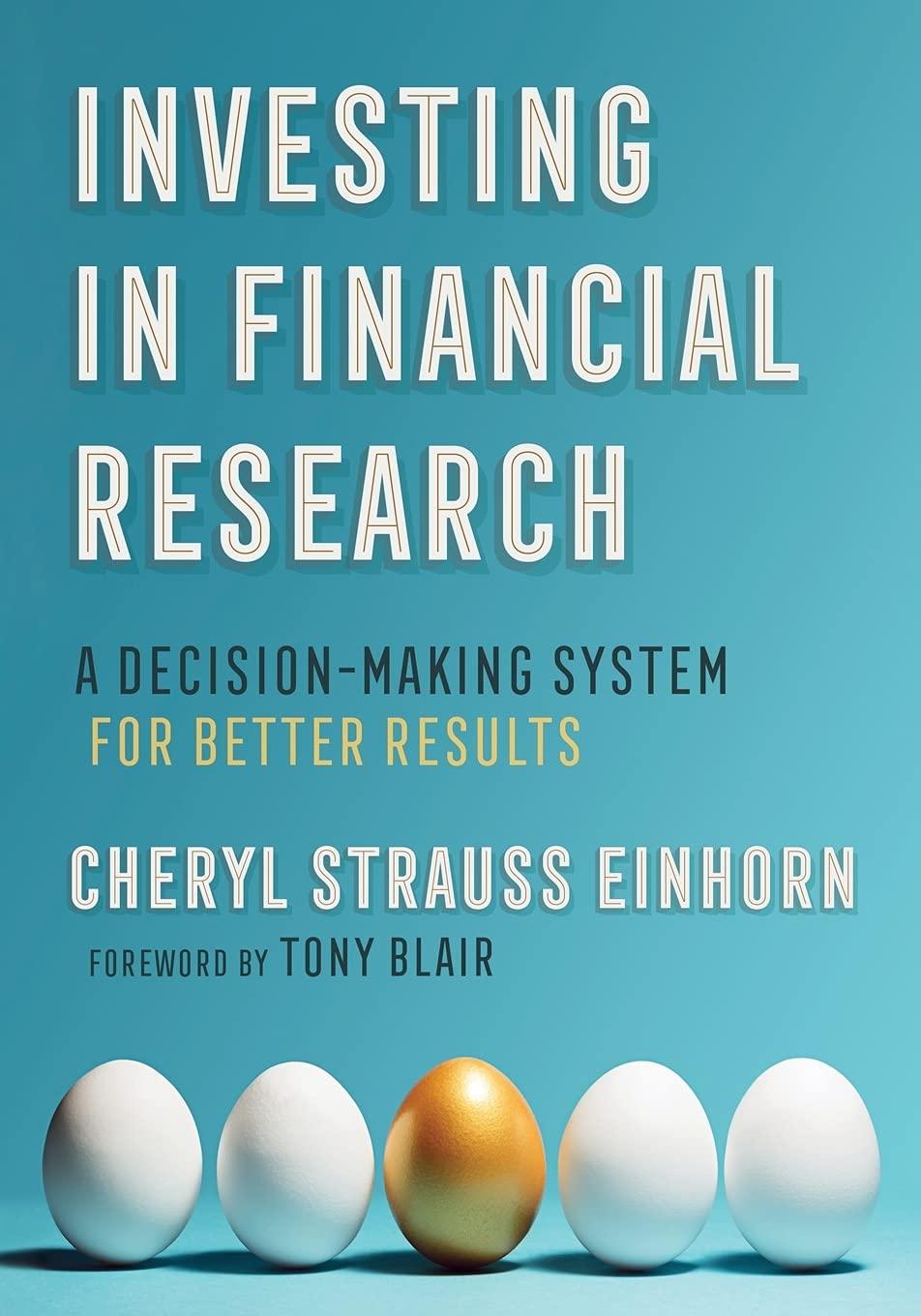Answered step by step
Verified Expert Solution
Question
1 Approved Answer
Instructions Show work by embedding the algebra in the answer cell(s) and any intermediate steps in the calculations. Leave all answers to 2-decimal places. Q1.
| Instructions | |||||||||
| Show work by embedding the algebra in the answer cell(s) and any intermediate steps in the calculations. | |||||||||
| Leave all answers to 2-decimal places. | |||||||||
| Q1. | Company A has projected net income per share for this year at $2.00 per share. It has traditionally paid out a dividend of 30% of its net income. Income and dividends have been growing at a rate of 5% per year. The equity discount rate for comparable companies is 10%. 2015 Spring2 | ||||||||
| a) | What is the projected dividend for next year? | ||||||||
| D1 = | |||||||||
| b) | What is the current value of the stock using the Constant Growth Model of the Dividend Discount Model? | ||||||||
| P0 = | |||||||||
| Q2. | If from Question 1, having that projected EPS of $2.00, Company A decides to reduce its dividend rate to 25%, and expects that the growth rate will increase as a result of the higher retained earnings to 8% per year: | ||||||||
| a) | What is the new projected dividend for next year? | ||||||||
| D1new = | |||||||||
| b) | What is the new stock value? | ||||||||
| P0new = | |||||||||
| Q3. | A separate company, Company B, has a ROE of 12%. | ||||||||
| a) | What will be its estimated growth rate if it has a dividend payout ratio of 45%? | ||||||||
| g = | |||||||||
| b) | If the company decreases the dividend payout ratio to 35%, what will be the new estimated growth rate? | ||||||||
| gnew = | |||||||||
| Q4. | A separate third company, Company C, will have earnings per share of $4.00 this year. It pays a dividend equal to 40% of net income. It is expecting that income and dividends will grow by 25% next year and 20% the year after. In subsequent years, it is expecting to return to its historical growth rate of 10% per year. The relevant discount rate is 15%. | ||||||||
| a) | What are the projected level of dividends for years 1, 2 and 3. | ||||||||
| D1 = | |||||||||
| D2 = | |||||||||
| D3 = | |||||||||
| b) | What is the value of the stock in year 2? | ||||||||
| P2 = | |||||||||
| c) | What is the value of the stock today? [assume dividend D0 has been paid out]. | ||||||||
| P0 = | |||||||||
| Q5. | Company D has EBITDA of $600 million. It has outstanding debt of $900 million. Its industry has typically displayed a Value/EBITDA ratio of between 6x and 8x EBITDA. If Company D has 100 million shares outstanding, what is the estimate of the per share value of this company? | ||||||||
| Low-end | High-end | ||||||||
| Value/EBITDA ratio: | 6 | 8 | |||||||
| Per Share Value: | |||||||||
| Average Per Share Value = | |||||||||
|
 Name:
Name: Step by Step Solution
There are 3 Steps involved in it
Step: 1

Get Instant Access to Expert-Tailored Solutions
See step-by-step solutions with expert insights and AI powered tools for academic success
Step: 2

Step: 3

Ace Your Homework with AI
Get the answers you need in no time with our AI-driven, step-by-step assistance
Get Started


